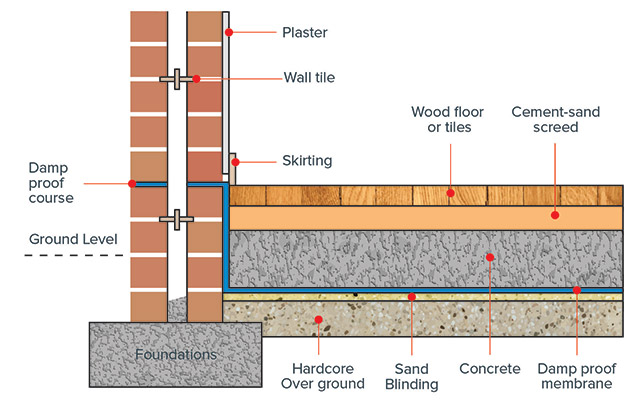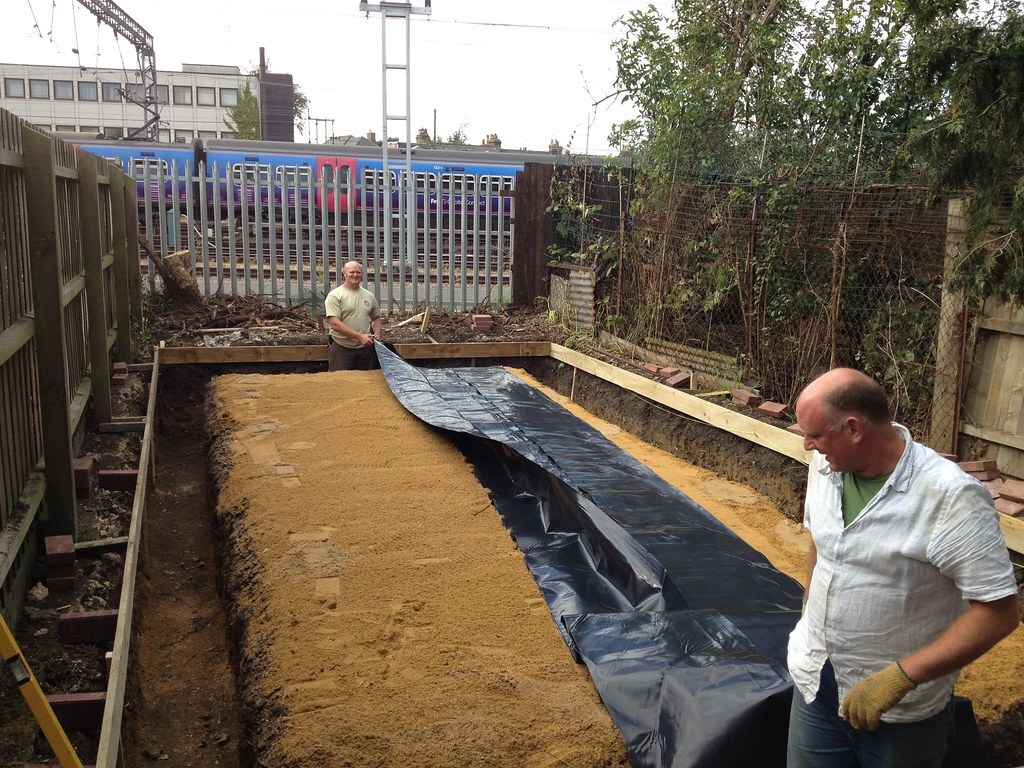Addressing condensation problems for good with mould treatment newcastle
Addressing condensation problems for good with mould treatment newcastle
Blog Article
Checking Out the Various Techniques and Solutions for Effective Damp Proofing
Wetness in buildings presents considerable difficulties to both structural integrity and indoor air top quality. Different techniques and options have emerged to battle this pervasive issue. From traditional damp-proof membrane layers to cutting-edge chemical treatments, each technique offers distinct advantages. Comprehending these choices is important for reliable moisture control. Selecting the ideal remedy depends on details structure problems and demands, triggering additional expedition into the most reliable wet proofing methods offered.
Understanding the Reasons For Wetness
Although moisture can occur from numerous sources, understanding these reasons is crucial for effective removal. Typically, dampness stems from three key resources: increasing wet, passing through wet, and condensation. Increasing wet occurs when groundwater takes a trip upwards with permeable materials, such as block or stone, typically due to an absence of an effective barrier (damp removal newcastle). Passing through wet is normally brought on by outside variables, including roof covering leaks, defective rain gutters, or harmed wall surfaces, enabling water to penetrate a home. Condensation, on the other hand, results from excess dampness in the air, commonly worsened by bad ventilation and temperature level distinctions, bring about water droplets developing on surfaces. Identifying these underlying problems is crucial, as each sort of wetness calls for a tailored strategy for remediation. Proper evaluation aids in figuring out one of the most effective services, eventually safeguarding the structural honesty of a building and enhancing indoor air high quality
Typical Damp-Proof Membranes

Chemical Damp-Proofing Solutions
Chemical damp-proofing solutions provide a cutting-edge approach to avoid moisture breach in buildings. These techniques normally include the application of fluid chemicals that pass through stonework and develop a barrier against rising moist. Frequently used chemicals include silanes, siloxanes, and other water-repellent representatives that react with surface area materials to produce a hydrophobic layer.The application process typically calls for drilling openings into the walls, injecting the chemical option, and permitting it to treat. This technique is especially advantageous for older frameworks where conventional damp-proof membranes might be not practical. In addition, chemical damp-proofing can be much less disruptive and extra affordable than substantial remodelling projects.While effective, these options depend on correct application and environmental conditions for peak efficiency. Routine maintenance and surveillance are vital to guarantee the long life of the damp-proofing treatment. On the whole, chemical damp-proofing represents a functional alternative for securing structures against moisture-related damage
Dental Caries Wall Building Strategies
Dental caries wall building and construction techniques provide countless benefits, particularly in wetness control and power performance. By including an air gap between 2 layers of stonework, these walls successfully minimize water ingress while improving insulation. This mix not only shields structures from wetness but likewise contributes to decreased power intake.
Benefits of Dental Caries Wall Surfaces
When taking into consideration efficient damp proofing techniques, the benefits of dental caries wall surfaces stand out plainly. Cavity walls are composed of two separate layers, creating an air space that properly decreases dampness penetration. This style minimizes the danger of moisture, as the external wall works as a barrier versus rainfall and water ingress. Additionally, cavity wall surfaces enhance thermal insulation, which adds to energy efficiency by minimizing warmth loss. They likewise offer sound insulation, helping to produce a quieter interior atmosphere. The air void allows for ventilation, which assists in moisture control and reduces the likelihood of mold and mildew growth. These benefits not just enhance the total convenience of a building but additionally contribute to its durability and structural stability.
Wetness Control Techniques
Effective moisture control methods are important in cavity wall construction to ensure long-lasting protection against wetness. One primary technique entails the consolidation of weep holes, which promote water drainage from the tooth cavity, stopping accumulation. Furthermore, the usage of breathable membranes can aid handle dampness degrees while permitting caught vapor to get away. Appropriate placement of insulation is likewise essential, as it needs to not obstruct drainage paths. Guaranteeing that the external leaves of the cavity wall are built with waterproof materials improves total longevity. Routine upkeep checks are vital to recognize any clogs or damages early, protecting the framework's honesty. Inevitably, a combination of these methods forms a durable protection against dampness invasion in cavity wall surfaces.
Insulation and Power Effectiveness
Insulation plays a vital function in boosting energy efficiency within cavity wall surface building and construction. By integrating protecting materials, these wall surfaces develop a thermal barrier that reduces heat loss and lowers power consumption. Efficient insulation not only helps keep a secure indoor temperature but additionally minimizes the threat of moisture, as it protects against condensation within the wall surface tooth cavity. Various techniques, such as making use of rigid foam boards or mineral woollen, can be utilized to achieve optimal insulation performance. Additionally, proper setup is important to ensure that gaps and gaps are decreased, which can otherwise endanger power efficiency. Inevitably, a well-insulated tooth cavity wall adds considerably to general sustainability and lowers home heating and cooling prices for house owners.
Outside Damp Proofing Techniques
Exterior moist proofing methods are necessary for safeguarding frameworks from wetness infiltration. 2 effective techniques consist of the application of waterproof membrane layers and the installation of French drains pipes. These solutions assist alleviate water accumulation and preserve the stability of structures.
Waterproof Membrane Application
While numerous methods exist for protecting against moisture ingress, the application of water-proof membranes continues to be an extremely reliable external moist proofing strategy. These membranes are usually made from products such as polyethylene, rubber, or modified asphalt, providing a robust barrier against water penetration. The installment process involves applying the membrane to the outside surfaces of foundations or wall surfaces, ensuring complete protection to avoid leaks. Correct attachment and sealing at joints are essential to making the most of efficiency. Water resistant membrane layers can be used in different forms, including fluid coverings and sheet membrane layers, allowing for versatility based on the details demands of the framework. This approach not just protects buildings from wetness however also improves their durability and structural integrity.
French Drain Installment
One reliable method for taking care of groundwater and avoiding moisture buildup around a building's foundation is the setup of a French drain. This drainage system contains a trench full of gravel and a perforated pipeline that reroutes surface water away from the structure. Appropriate setup requires mindful preparation, ensuring that the drainpipe slopes away from the framework to promote ideal water circulation. Furthermore, the location of the drainpipe is important; it ought to be placed in areas prone to merging or excess wetness. Regular upkeep, consisting of clearing up debris from the crushed rock and making certain the pipe continues to be unobstructed, is necessary for long-lasting performance. Eventually, a well-installed French drainpipe can considerably minimize the threat of water-related problems in basements and structures.
Inside Waterproofing Methods
Interior waterproofing techniques are vital for shielding a building's interior from dampness infiltration and prospective water damages. These techniques commonly involve the application of customized products and strategies developed to develop a moisture obstacle within the structure. One usual approach is using water-proof coverings or sealants on walls and floorings, which prevent dampness from permeating surfaces.Additionally, setting up indoor drainage systems, such as sump pumps, can successfully take care of water accumulation in basements and crawl rooms. One more technique entails the usage of vapor obstacles, which are mounted to hinder dampness activity from the ground right into living spaces.Moreover, resolving any type of splits or spaces in walls or foundations with proper sealers ensures a detailed protection versus water invasion. By implementing these interior waterproofing methods, building proprietors can greatly decrease the threat of mold and mildew development, structural damages, and various other moisture-related concerns. Correct implementation of these techniques is necessary for lasting security and structure stability.
Routine Maintenance and Evaluation Practices
Regular maintenance and inspection practices are essential for assuring the lasting performance of wet proofing solutions in any building. Regular checks make it possible for building proprietors to recognize very early indications of wetness invasion, such as peeling paint, mold and mildew development, and read more moldy odors. These indications can indicate underlying problems that call for prompt attention.Inspections need to be carried out a minimum of annually, concentrating on susceptible areas like cellars, crawl rooms, and exterior wall surfaces. Throughout these assessments, home owners must analyze sealers, drain systems, and air flow to verify they operate correctly.Additionally, preserving downspouts and rain gutters is vital, as clogged up systems can cause water buildup near the structure. Implementing a normal maintenance timetable, along with prompt repair work, can considerably expand the lifespan of wet proofing procedures and secure the architectural integrity of the structure. Proactive actions ultimately add to the general health and safety and security of the living atmosphere.
Regularly Asked Questions
How Much Time Does Damp Proofing Commonly Last?
The duration of wet proofing effectiveness differs, typically lasting in between 20 to 50 years. Aspects such as application top quality, ecological conditions, and upkeep techniques considerably affect the long life of the damp proofing treatment.

Can I Damp Evidence My Home Myself?
The private contemplated the usefulness of DIY damp proofing. With appropriate research and the appropriate materials, it is possible. However, they also acknowledged the significance of expert assistance to assure durable performance and protect against future concerns.
What Are the Indications of Ineffective Damp Proofing?
Indications of ineffective moist proofing include consistent moldy odors, visible mold growth, peeling paint, wet spots on wall surfaces, and timber decay - damp proofing newcastle. Home owners should address these problems without delay to stop more damages and health issues
Does Damp Proofing Affect Indoor Air High Quality?

Exactly How Much Does Specialist Damp Proofing Cost?
Expert wet proofing prices vary substantially, usually varying from $1,000 to $5,000 depending upon the residential or commercial property's dimension, the extent of the moist concern, and selected approaches. Each scenario requires a tailored analysis for precise rates. Frequently, dampness originates from three key resources: rising wet, passing through damp, and condensation. When taking into consideration reliable wet proofing approaches, the benefits of cavity walls stand out prominently. External damp proofing methods are important for securing frameworks from dampness seepage. While numerous approaches exist for preventing moisture ingress, the application of waterproof membrane layers continues to be a very reliable outside moist proofing method. Indications of inadequate moist proofing consist of consistent mildewy smells, noticeable mold and mildew growth, peeling paint, damp patches on wall surfaces, and timber degeneration.
Report this page